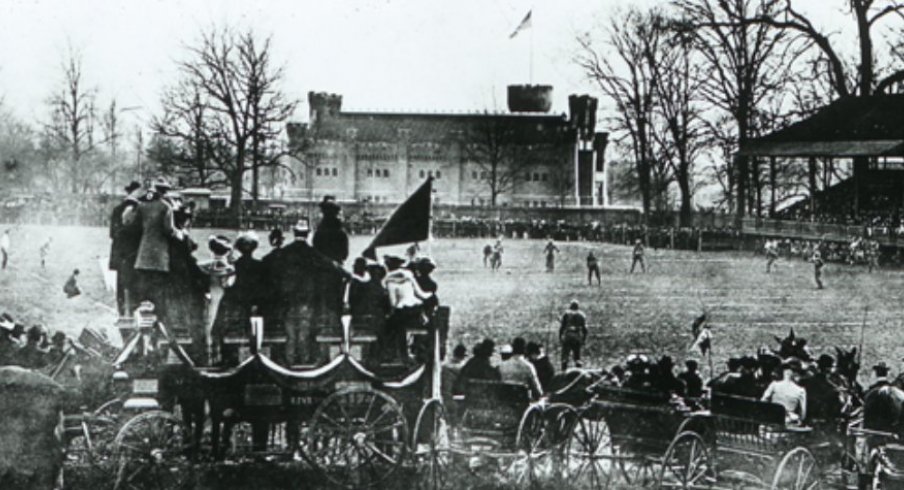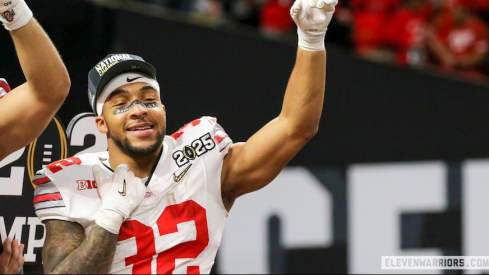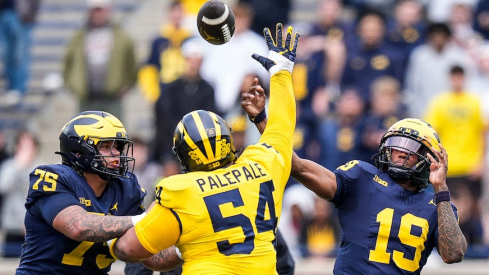It's pretty wild to think Ohio State football enters its 131st season this fall, assuming the coronavirus doesn't spoil things.
Exactly 100 years ago, the 1920 season had its fair share of notable happenings.
Head coach Dr. John Wilce entered his eighth year at the helm having already posted two undefeated seasons (1916, 1917) and the school's first-ever win over Michigan, in 1919, thanks to the exploits of Chic Harley.
Wilce would be without Harley heading into 1920 but 1919 quarterback Pete Stinchcomb was back, this time as Harley's replacement at halfback, while Hoge Workman took over signal-calling duties.
The Buckeyes started off a perfect 3-0 outscoring Ohio Wesleyan, Oberlin and Purdue by a combined 109-0 at Ohio Field. The location on High Street between 17th Avenue and Woodruff Avenue served as the Buckeyes' home field since 1898.
The facility featured 500 seats in the early days before numerous bleacher expansions brought seating capacity to 14,000. With Ohio State football already gaining interest (and the university itself realizing enrollment growth), Harley vaulted its popularity tremendously. As many as 20,000 fans would congregate within the bleachers and around the field while another 20,000 reported to watch from even farther away. In fact, the OSU library notes some nearby homeowners erected bleachers on their roofs and charged admission.
The exploding appetite for Ohio State football had the university exploring new stadium options at least five years earlier and in 1916, according to noted OSU football historian Jack Park, professor Thomas French asked a university engineer to prepare sketches for what a new stadium could look like. Though the plan was originally approved, writes Park, school president William Oxley Thompson wasn't feeling the structure or the parking situation leading to additional proposals before finally landing on one in 1919 from Howard Dwight Smith, an Ohio State graduate and School of Architecture member.
Smith's design included the horseshoe shape previously featured in OSU architect Joseph Bradford's version and would be situated along the floodplain of the Olentangy River. The updated design would include a second deck to increase capacity without moving fans further from the action and features inspired by The Colosseum and Pantheon thanks to Smith's time spent in Europe studying its ancient ruins.
Now armed with approval from the Board of Trustees but without any funding, French formed a team of university figureheads and area businessmen to create a campaign intent on securing $1,000,000 in private donations.
The campaign launched October 16, 1920, the same day as Ohio State's 17-0 win over the Boilermakers at Ohio Field. A week-long kickoff effort reached out to OSU graduates across the state and featured on-campus events each day as a flood of donations began to pour in.
"Stadium Week" culminated with Wilce's team taking on a well-respected Wisconsin program led by head coach John Richards. Richards was familiar to Ohio State fans as he guided the Buckeyes to a 6-3 record as head coach in 1912 before resigning after one year, paving the way for Wilce's arrival.
Despite the six wins that season, Richards was most remembered for pulling his Buckeyes off the field late in the fourth quarter with Ohio State on the wrong end of a 37-0 score against Penn State. Richards was chastised nationally for doing so, because of what he alleged as rough play by the Nittany Lions.
In front of at least 16,000 fans at Ohio Field for the 1920 clash, Richards' Badgers entered the matchup with a 3-0 record and held a 7-0 lead late in the fourth quarter before the Buckeyes finally got going.
Workman hit Stinchcomb with a 36-yard touchdown pass before Stinchcomb missed the extra point, cutting Wisconsin's lead to 7-6.
Minutes later, Ohio State regained possession and went on a 90-yard march to win the game. Facing a 3rd-and-9 with under a minute to play, as described by Park, the Buckeyes employed a bit of trickeration. Workman rolled right as if on a sweep before dropping back and launching a pass across the left side of the field to Stinchcomb for a 48-yard touchdown.
After Ohio State's shocking win, Richards, in a familiar refrain, reportedly cried about how his team was treated by the Ohio Field fans. He suggested his team was insulted and heckled throughout the game and he'd resign if Wisconsin scheduled Ohio State again.
An alternate version of events in the book "Creating the Big Ten: Courage, Corruption and Commercialization," has Richards blaming Wilce and Ohio State for the Buckeyes not appearing on Wisconsin's 1921 schedule. Because Ohio State would not be coming to Madison, Richards declared, "no Wisconsin eleven coached by me will ever meet an Ohio State team again."
As it turned out, Ohio State and Wisconsin would not face each other on the gridiron until 1930. (Richards lasted as Wisconsin's coach through the 1922 season.)
After giving Wisconsin the business on the field, the 1920 Buckeyes would capture wins at Chicago (7-6), against Michigan (14-7) and at Illinois (7-0) setting up a date with Cal's "Wonder Team" in the Rose Bowl.
It would be Ohio State's first trip to Pasadena and also its first game west of the Mississippi River.
Despite entering the contest as prohibitive favorites based on the strength of the conference, Ohio State was smoked 28-0 by the undefeated Bears as both Workman and Stinchcomb left the game with injuries. Over the season, Cal outscored opponents 510-14.
But hey, at least Ohio State stuck it to old man Richards, beat Michigan, and Ohio Stadium's funding was secured.


